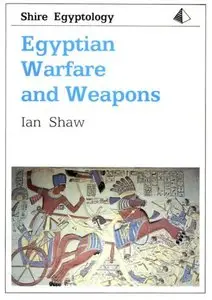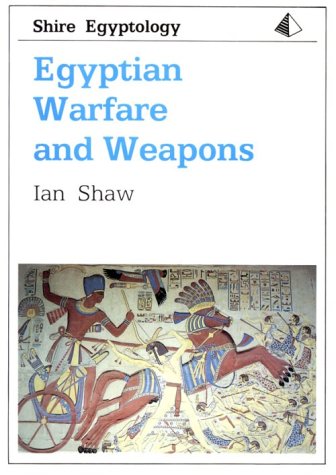Ian Shaw “Egyptian Warfare and Weapons"
Shire Publications | 1999-06 | ISBN: 0747801428 | 72 pages | PDF | 2,67 MB
Shire Publications | 1999-06 | ISBN: 0747801428 | 72 pages | PDF | 2,67 MB
Review
Get the clearest picture with the least effort
Ian Shaw is a relatively well known scholar in the field of Ancient Egyptian studies. This book is one of several books he has written. Little is written in the field of ancient weaponry. Ian Shaw makes a great contribution to this field by gathering into one source the necessary inscriptions, paintings, and archaeological evidence to create one of the clearest views of ancient Egyptian warfare and the weapons they used. The organization of the book begins with fortifications, enemies of Egypt, and the Egyptian Army. Ian Shaw does a good job of identifying Egypt's enemies with primary documents such as the "Execration Texts," that give a list of everyone that the Egyptians desired to destroy. He also provides ample examples of fortifications and discusses archaeological remains from several fortresses, most notably Buhen – one of the most well preserved fortifications in Egypt. He provides photographs of material remains of weapons and analyzes reliefs and other wall inscriptions. This combination brings to life the various periods of ancient Egypt and gives the reader a good understanding, through examples and illustrations, of the "why" and "how" of Egyptian fortifications and weapons. Next Ian Shaw provides us with descriptions of two of the most famous ancient Egyptian battles of Megiddo and Qadesh as examples of Egyptian strategies and international diplomacy. The battle of Megiddo brought all of the Palestine region under the control of Egypt. This region was important because of Egypt's lack of wood and other desired resources. The book recreates the battle and simplifies it to show the strategies used by the Pharaoh (Tuthmosis III) to conquer the city. After describing the battle of Megiddo Ian Shaw uses letters such as Ribaddi's to show that Egypt also used diplomacy to control the area of Syro-Palestine. Lastly the book illustrates in photographs and interpretations the great battle of Rameses to against the Hittites at Qadesh. This battle has never been more clear with illustrations of troop placements and movements. Finally, Ian Shaw shows through wall reliefs the beginning and eventual decline of Egyptian military technology. Greater military powers, such as Assyria, beat down Egypt's frontier walls, and though none of them took total control over Egypt, it left them open to invasion from other peoples and finally to Alexander and his conquests. Ian Shaw creates a masterpiece of combining all of the different sources to compile all of the necessary and interesting pieces of the ancient Egyptian warfare and weapons puzzle. Anyone interested in this subject should begin with this book in order to get the clearest picture with the least effort.



